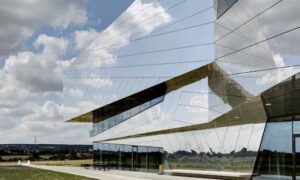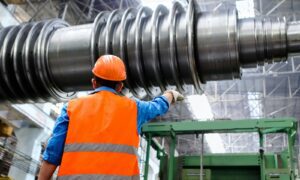Are you tired of simply viewing transportation as a means to an end? Well, buckle up and get ready for a wild ride because, in today’s blog post, we’re diving deep into the world of transportation and uncovering its true meaning. From the humble horse-drawn carriages to the cutting-edge technology of self-driving cars, join us on this thrilling journey as we explore how transportation has shaped our lives, bridged gaps between communities, and revolutionized the way we connect. So fasten your seatbelts and prepare for an enlightening adventure where A leads to B but also uncovers so much more than meets the eye!
Introduction: What is the Definition of Transportation?
Most people think of transportation as simply a way to get from Point A to Point B. But there is so much more to it than that! Transportation is about moving people and goods from one place to another. It’s about connecting people and communities. And it’s about getting people where they need to go when they need to be there.
There are many different types of transportation, including cars, buses, trains, planes, boats, and bikes. Each has its own unique set of benefits and challenges. But all forms of transportation have one thing in common: they make our lives easier by helping us get where we need to go.
So what is the definition of transportation? To put it simply, transportation is the movement of people and goods from one place to another. It’s a vital part of our economy and our way of life. And it’s something we all rely on every day.
Types of Transportation
There are many types of transportation available to us today. Each has its own set of advantages and disadvantages that make it better or worse for different types of travel. Some of the most common types of transportation include:
Air travel is by far the quickest way to get from one place to another. However, it can also be the most expensive option, especially if you are flying internationally. It is also worth noting that air travel can be quite stressful, as there are often long lines and security checkpoints.
Driving is a great option if you are planning a road trip or need to transport large items. However, it can be very tiring to drive long distances, and traffic jams can be frustrating. Parking can also be difficult to find and expensive in some cities.
Public transportation is usually much cheaper than other options, and it can be very convenient if it is available in your city. However, it can be crowded during rush hour, and you may not have as much privacy as you would on other modes of transportation.
Benefits of Transportation
There are countless benefits to transportation. It can help us get to work, school, and the grocery store. It can also help us travel to new places and explore the world. But what is the true meaning of transportation?
At its core, transportation is about movement. It’s about getting from one place to another. Whether we’re walking, driving, taking the bus, or flying, we’re using transportation to move from Point A to Point B.
While transportation is a necessity for many of us, it can also be a source of enjoyment. For some people, transportation is a way to explore new places and experience different cultures. For others, it’s a way to relax and escape the hustle and bustle of everyday life.
No matter how you view transportation, there’s no denying that it plays an important role in our lives. So the next time you’re planning a trip or just getting from one place to another, take a moment to appreciate all that transportation has to offer.
Challenges with Transportation
Many challenges come with transportation. One of the biggest issues is the cost of gas and vehicle maintenance. This can be a real burden on families, especially those who have to commute long distances for work. Another big challenge is traffic congestion. This can cause delays and frustration, not to mention wasted time and fuel. There are also safety concerns to consider when traveling, whether by car, plane, or train. With so many people on the road, there is always the potential for accidents. And then there are the environmental concerns associated with transportation. The burning of fossil fuels releases harmful emissions into the atmosphere, contributing to climate change. Finding ways to reduce our reliance on cars and trucks is crucial for protecting our planet.
The Future of Transportation
The future of transportation is always changing. What was once cutting-edge technology can quickly become outdated. This is especially true in the world of transportation, where new advances are constantly being made.
One thing that is certain about the future of transportation is that it will continue to evolve. As our understanding of physics and engineering improves, we will develop new ways to move people and goods around. We may even find new ways to travel entirely, such as through wormholes or hyperspace.
Of course, the future of transportation is not just about developing new technologies. It is also about finding ways to use existing technologies more efficiently. For example, we may develop better algorithms for routing traffic or learn how to better utilize public transit systems.
Ultimately, the future of transportation is about making sure that everyone can get where they need to go safely and efficiently. By continuing to innovate and improve our transportation infrastructure, we can make sure that the future is bright for all who rely on it.
Conclusion
Transportation is a complex and ever-evolving concept. It can be as simple as walking from one place to another, or it can involve complicated systems of roads, rails, and airplanes that span the globe. Whatever form of transportation we choose to use, it’s important to remember its purpose: connecting us with people and places around the world so that we can explore new cultures, experiences, and opportunities beyond our neighborhoods. So go out there—from A to B—and see what you discover!



































